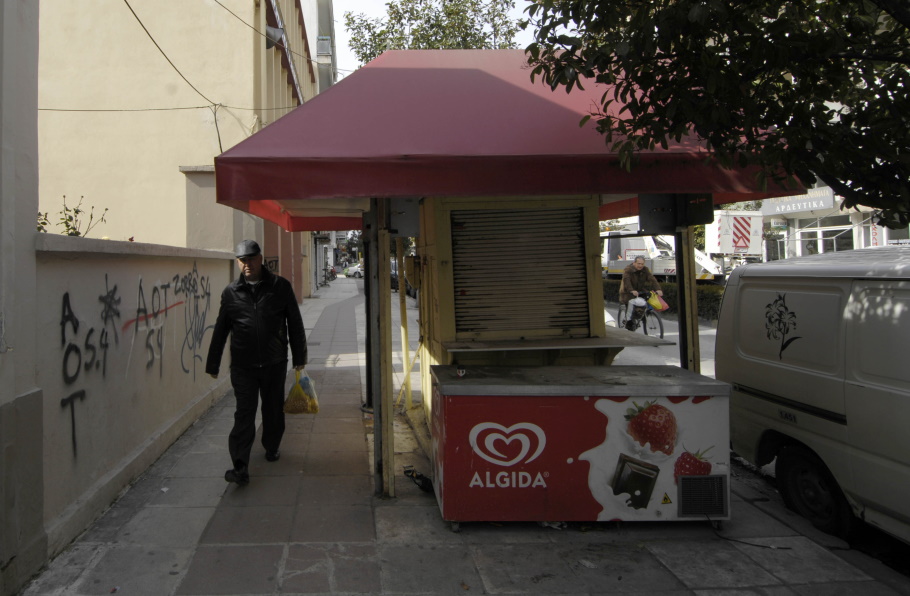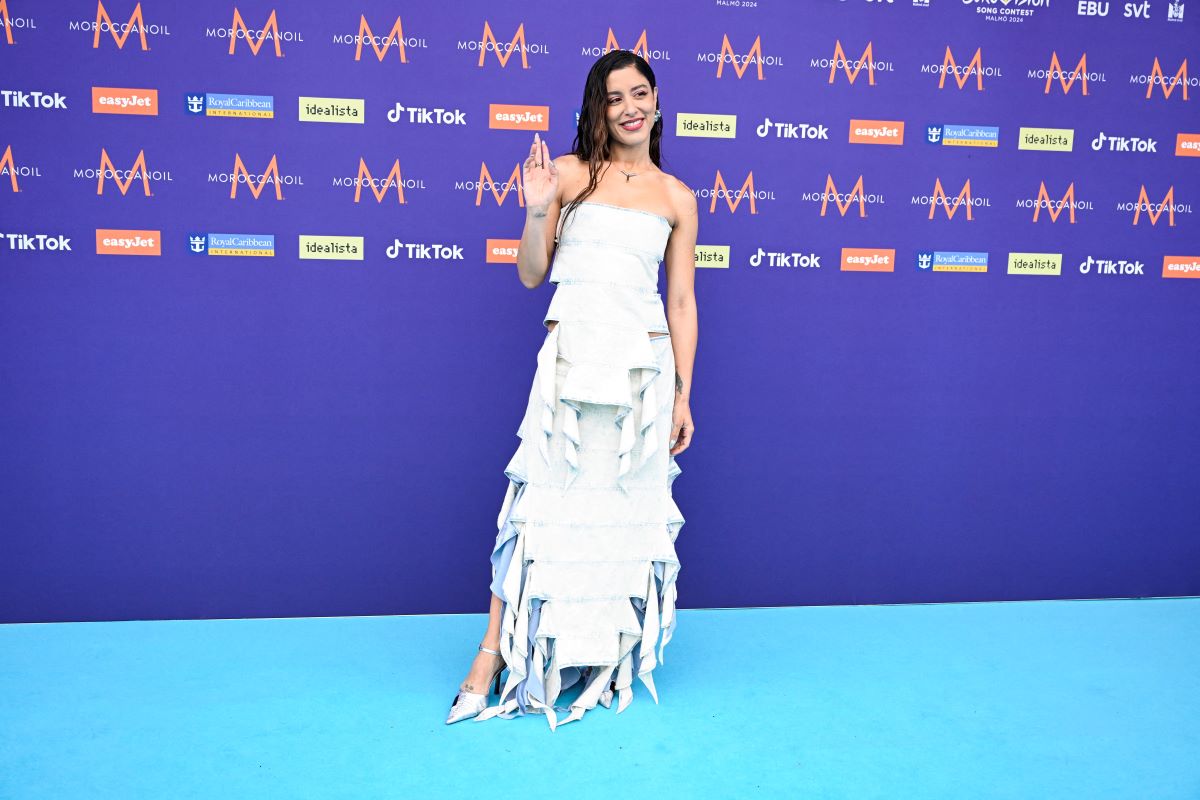
the Civilization It has the power to shape consciousness. If this is a general truth, then whoever holds the reins of the arts also has power in his hands.
What if power was in the hands of women? “What if women ruled the world?» How different will things be for society but also be the same?
Women, together
EMST Collection, works by Maria Luizido and Ghada Amer
Part of the donation to Dr. Daskalopoulos
Photo: Paris Tavidian
C.Paris_Tavitian
This question is posed by his series of exhibitions National Museum of Contemporary Artwhich presents in three parts the work of the women who will “occupy” its headquarters in the coming months.
“Women, Together”, “Time in My Hands”, “Seeking Happiness for as Many as Possible” and “Dee’s Possessions” are the titles of the exhibitions that you can find at the museum from December 14. All of these works are created by female artists who have the magical ability to make you wonder, “What if women found their rightful place in the history of art”? Will the wounds heal?
Those who pull themselves from the past into the present without regret. Such as the wound that was “resurrected” with the abolition of abortion in the United States of America, and which came out of the closet of history after about 50 years. The community is making strides forward, notes EMST Technical Director Katerina Grego, but “For every two steps forward, he takes one step back“, continued. This tactic confirms that the renegade remains are in fact rooted deep within us.
The social inability to free ourselves from the shackles of gender inequality is another reason why visiting exhibitions titled “What If Women Ruled the World?” Acts as an “umbrella” for her.
From past to present and surrealism
The exhibitions “Women, Together”, “Time in My Hands”, “Pursuing Happiness as Many as Possible” and “De Possessions” are not necessarily about women. The works touch on various issues, from the creators who travel with us from the past to the present, and from there to a surreal “somewhere” that has no time limits, but rather has colors, music, and many memories searching for a way to be lost.
These memories find a home in Danai Anestiadou’s first solo exhibition, curated by Ioli Tzanitaki and called “D Possessions”.
Sculptures, collages, film props, crystals and iron objects create a metaphorical scenography. The elements that make up this exhibition create a fun and enchanting environment, which simultaneously evokes a strange and ominous sense of surrealism. Between myth, fantasy and mysticism, Anciado comments on the society and politics that take shape in the modern era.
Danai Anciado, Property of De, 2023 at Wales Center for Contemporary Art, Brussels
Danai Anciado, Property of De, 2023 at Wales Center for Contemporary Art, Brussels
Danai Anciado, Property of De, 2023 at Wales Center for Contemporary Art, Brussels
Source: c.PARIS_TAVITIAN
Danai Anciado, Property of De, 2023 at Wales Center for Contemporary Art, Brussels
Source: c.PARIS_TAVITIAN
Danai Anciado, Property of De, 2023 at Wales Center for Contemporary Art, Brussels
Lida Papakonstantinou keeps time in her hands
Leda Papakonstantinou, 78, is one of the most important artists in the history of contemporary art in Greece. Focusing on the body, Papaconstantinou explores issues related to gender, sexuality, the collection of personal memory, history, politics, and the environment. Her work has various forms, performances, sculptures, videos, on-site installations, drawing, etc
Lida Papakonstantinou
Kovalali, 1971
Image of Maidstone College of Arts performance, Maidstone, and public spaces
Performance: Lida Papakonstantinou
Photo: Roy Tunnicliffe
The title of her exhibition “Time in My Hands” comes from the site installation the artist created in 2010 for Monastiraki Metro Station, which was based on a photograph of the video projection titled “Arrows are Love”, on the wall of the Bey Hammam Ottoman Baths in Thessaloniki.
Time is in my hands. Lida Papakonstantinou.
Photography Retrospective: Paris Tavidian
C.Paris_Tavitian
One that particularly impressed us was the work Lida Papakonstantinou inspired to create from migrant women in 2000.
Lida Papakonstantinou, works from the exhibition “Time in My Hands”.
The reason behind the idea of the container-like idea was a documentary the creator watched in the early 2000s about immigrants. He began to worry about their living conditions. The result of her interest was the creation of this particular project, which may not consist entirely of immigrant clothing, but of used clothing, some of which was given to her by acquaintances and friends.
The clothes are sewn together and this choice is not a coincidence, because tailoring is also part of her art.
“I wear exclusively used clothes,” she tells us in a conversation we had about all of the above, in front of her work. “It’s a way of life,” she adds, and helps us realize that this particular habit is “ingrained” in it, and is not something you try out of environmental awareness.
Lida Papakonstantinou.
If you visit the exhibition “Time in My Hands” which will be located in the basement of the EMST until April 21, 2024, you will have the opportunity to step inside the work, where the meaning acquires greater depth, because, if you give it a little time, the screen and the woman will touch your sensitive strings .
Women together and in art
On the third floor of the museum is “Women Together,” a group exhibition consisting of works from the EMST collection as well as the first showing of a series of works from the donation of the Dr. Museum history.
Women, together
EMST Collection, works by Paki Vlassopoulos and Despina Meimaroglou
Photo: Paris Tavidian
C.Paris_Tavitian
The goal of the National Museum of Contemporary Art is this very exhibition.”To emphasize in a clear and bold way the need to rewrite the history of Greek art, in order to highlight its gender aspects that remained in the shadows. The Women, Together exhibition consists exclusively of the works of female creators in its collection and takes a stance on a major issue facing all museums today: the underrepresentation of women and the need for action on gender equality – one of the major and common problems faced that has governed all “waves” of feminism over the years, regardless of Regardless of the number of differences between them».
Note: Madani Flight, 2011
Oil on linen, 61 x 45.7 cm.
EMST | Part of the donation to Dr. Daskalopoulos
The works in the exhibition do not have a single theme, but there are quite a few times when the artists are concerned with common issues, such as sexuality, equality, oppression and difference.
The “Women Together” exhibition presents a total of 49 works by 25 artists of different generations and origins, ten of whom are Greek. 12 of them come from a donation from the Dr. Group. Daskalopoulos and 13 are from EMST’s current collection, while seven of the works are new acquisitions of the museum. The show also includes an important museum work by Etel Adnan (Lebanon), which is a new long-term loan to the museum, provided by the Saradar Collection (Paris/Beirut).
The work that “won us” a little more in this particular exhibition is by Maria Tsgari, who chooses to constantly move between different media, techniques and materials.
Women, Together EMST Collection, works by Hera Buyuktashyan and Maria Tsagaris
Photo: Paris Tavidian
C.Paris_Tavitian
The project is called “I Couldn’t Bear Living Without You” and consists of natural human hair purchased in Istanbul. According to the author’s official position, it is a chronological poetry story that speaks about the difficulty of emotional transformations and the complexity of dependency relationships through the action and interpretation of the poetry story.
From ancient times to the present day, haircuts have been a sign of mourning, and have been associated with the intention of humiliation, suppression of eroticism, limitation of sexuality, marginalization, and even punishment.
“I Couldn’t Bear Living Without You” by Women with EMST.
The work of Maria Tsagaris.
Chrissa Romano, the past and “seeking happiness for as many as possible”
Chrissa Romano’s exhibition, “Pursuing Happiness for as Many as Possible,” includes works from almost all sections of her work, in order to highlight the relevance and organic relationship between them.
At the same time, it places the works in their historical, political and social context. The tour begins with the Legends, which are paintings of the period in which he left for Paris. It continues with the historical collages of 1965, Meccano’s large sculptural constructions – inspired by the building toy that bears her name and was stereotypically aimed at boys – and screen prints from the famous Mec Art Graphic atelier in Paris, and ends with her more mature works, Maps – mazes in her signature poster decoration technique. In plexiglass.
Finally, the exhibition concludes with a video based on the rich photographic archive of Chrissa Romano and her husband, the great artist and ASKT professor, Nikos Kisanlis, focusing on the inseparable mutual relationship between art and life.
Striving to achieve happiness for as many people as possible. Chrissa Romano
Photo: Paris Tavidian
Source: c.PARIS_TAVITIAN
Chrissa Romano
Silkscreen of paper
Some diary pages, 1973, 65 x 50 cm.
Chrissa Romano
Luna Park International, 1965, collage on canvas, 200 x 200 cm.

. “Certified social media geek. Passionate webaholic. Unapologetic music specialist. Food ninja.”





More Stories
Eurovision 2024: Marina Satti on the turquoise carpet of the event
Bernard Hill: The great actor is dead
Dimitris Kokotas: New statements by his wife